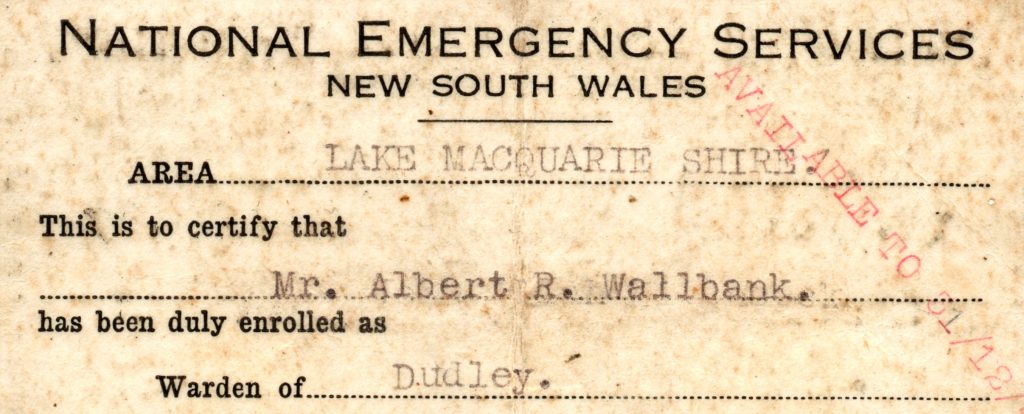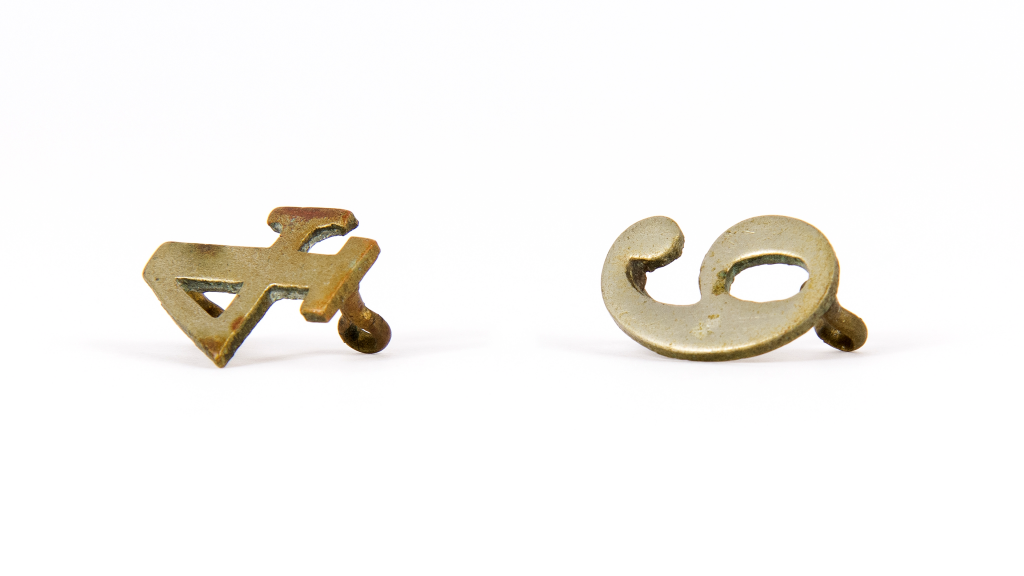
Small metal numbers were once used to signify the badge numbers of police officers. Using the small holes or loops, the numbers were hand-sewn to the high, stiff, and uncomfortable collar of an officer’s tunic. These particular numbers —two fours and a six—were found in the desk of Albert Edward Wallbank (1887-1953), an officer at […]
Read More…

Albert Wallbank served as a police constable in Carrington, Newcastle for seven years until March 1921, when he was transferred to Dudley, then a small seaside town. The ink stand pictured dates to the 1920s and is believed to have been gifted to Constable Wallbank. Perhaps it was a farewell gift from the Carrington community, […]
Read More…
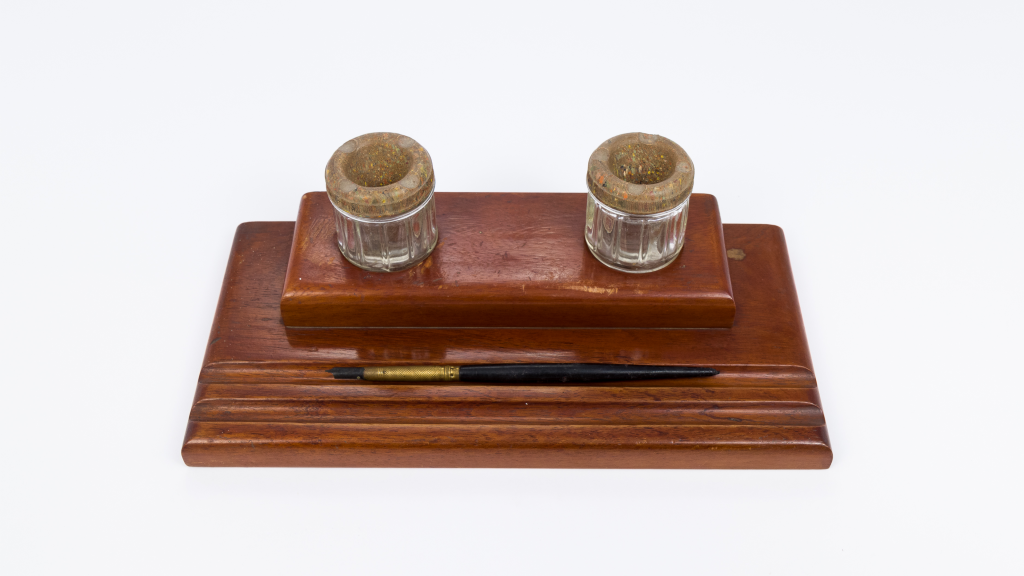
Constable Albert Wallbank was dedicated to three things: his family, his job and his adopted community of Dudley. Sadly, Albert (1887-1953) had not known his own father, because he died when Albert was 14 months old. Through his mother Sarah (neé Singleton) Albert descended from the convict William Singleton who arrived in New South Wales […]
Read More…
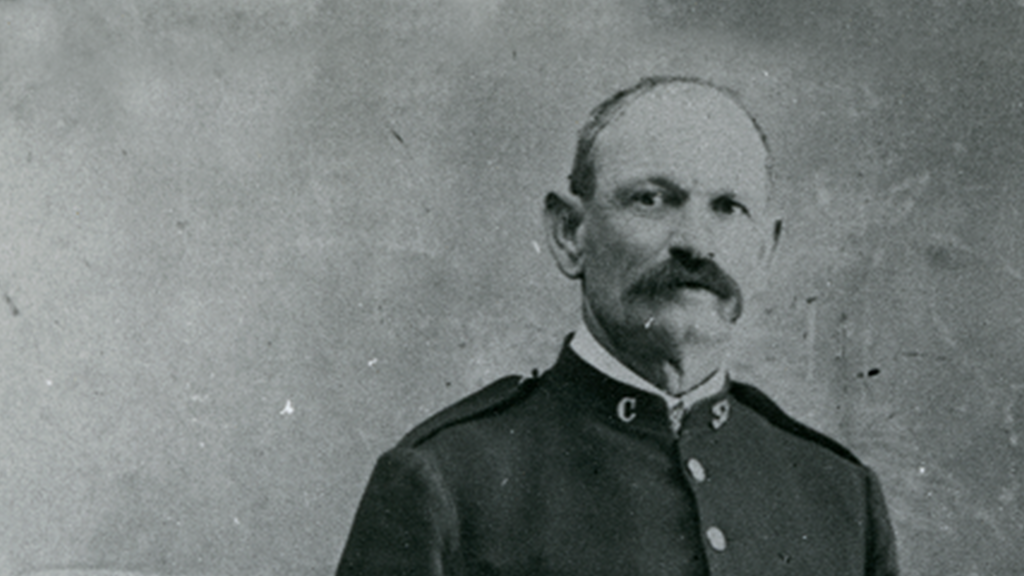
This photograph shows Herbert Norman Palmer (1857–1931) in his Mounted Police uniform, minus hat, and is thought to have been taken upon his retirement in 1917. Palmer joined the NSW Mounted Police in 1891 and was posted across a number of stations in the Greater Hume region including Albury, Gundagai, Wagga, Tumut and Coolamon. In […]
Read More…
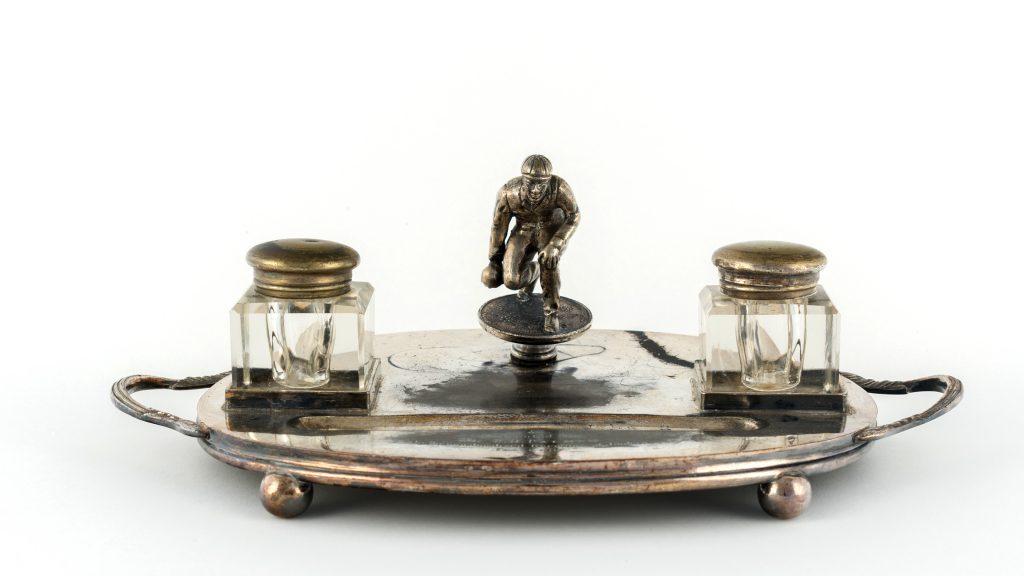
As a retirement gift this silver ink stand made by Barker Brothers of England is perfect. But it is much more than a retirement gift, it is a symbol of the high regard in which the recipient was held and the exercise of commonsense in uncertain and difficult times. The ink stand was presented to […]
Read More…
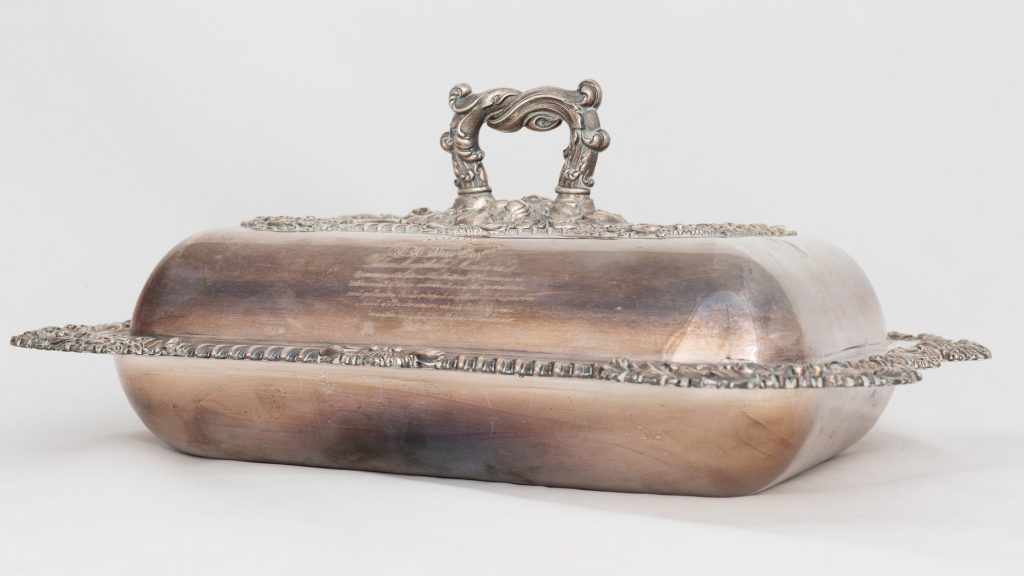
Setting out early one day in December 1840, a tall, dark-eyed Irishman named Edward Denny Day (1801-1876), the local Police Magistrate, led a police posse through the bush around Scone, not far from Maitland. They were tracking the escaped convict turned bushranger Teddy ‘Jewboy’ Davis and his gang, who for two years had been ‘terrorising’ […]
Read More…
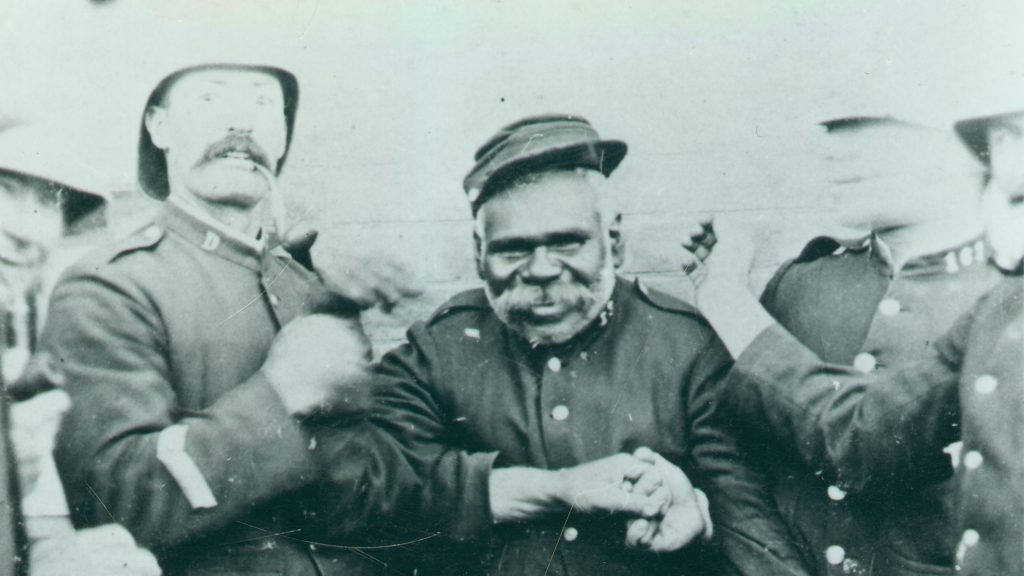
Aboriginal Police Tracker ‘Tommy’ worked in Broken Hill from the late 1890s-1910. His employment and skill as a tracker was renowned and widely reported in the press. Tommy’s police work also saw him employed at the Silverton Police Station, along with other Aboriginal trackers. Moreover, his time at Broken Hill coincided with a craze for […]
Read More…
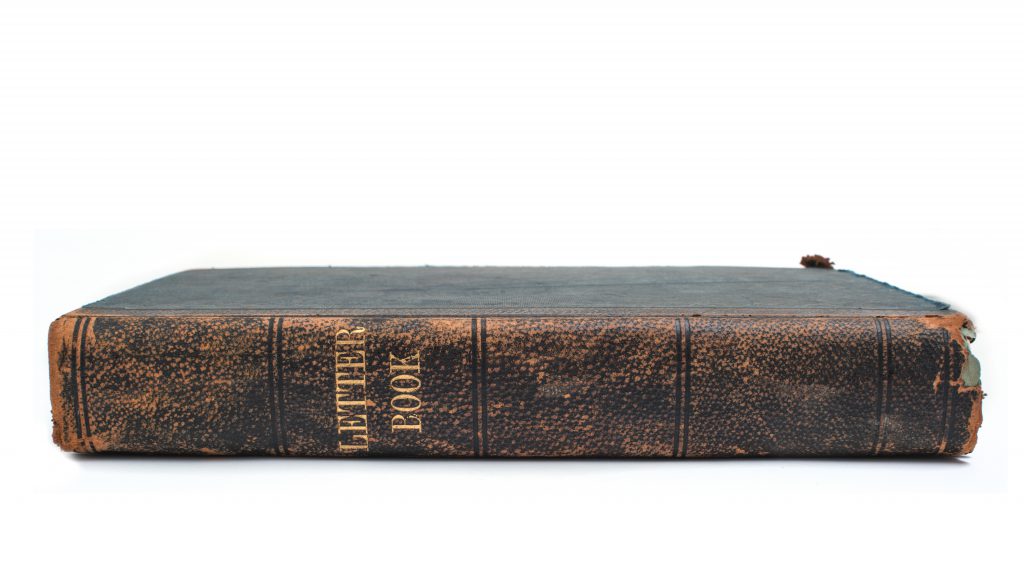
Tamworth was the first town and municipality in Australia, and the Southern Hemisphere, to install electric streetlights. The Veness Letter Book, pictured here, documents the unfolding story of this celebrated occasion. Installed in 1888, the electric streetlights replaced poor performing gas and kerosene lamps, which dimly lit the centre of town. The installation of electric […]
Read More…



